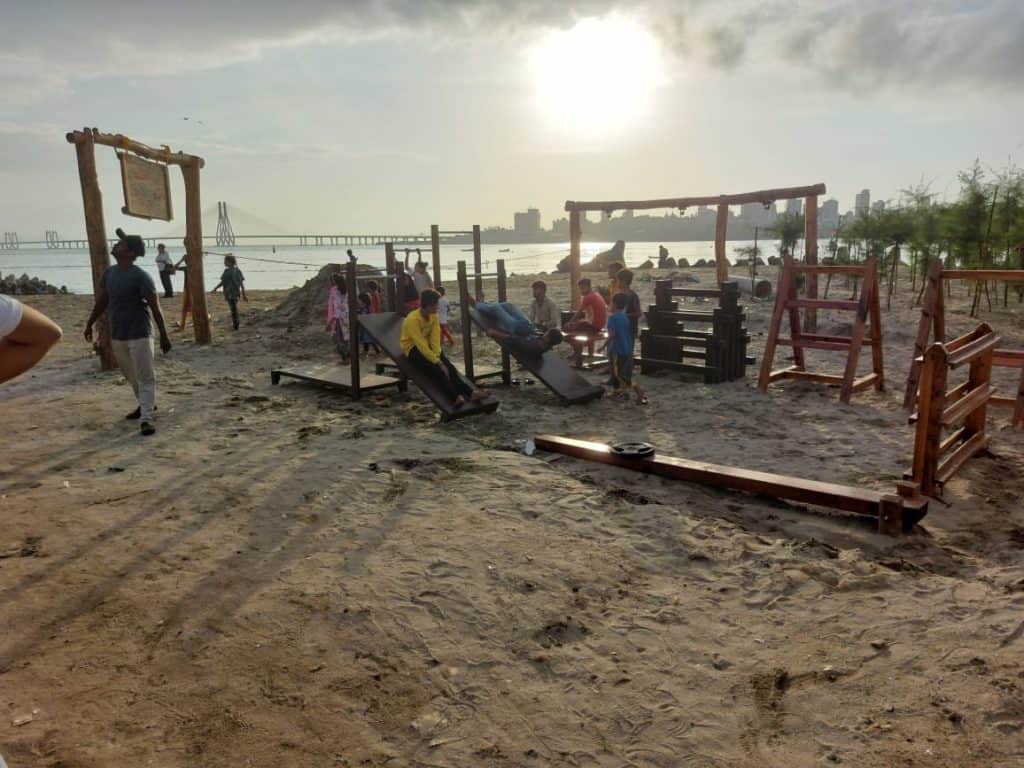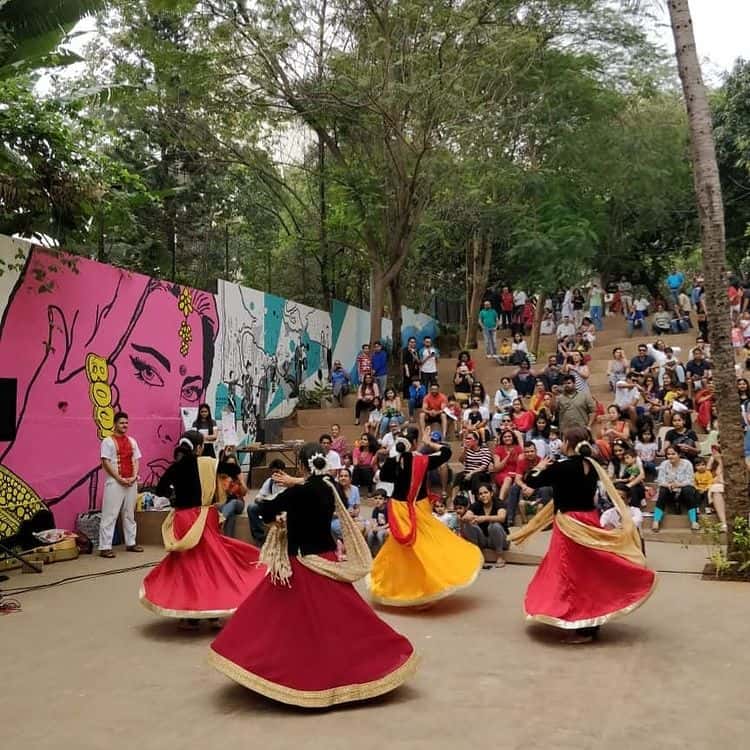The coveted St. Stephen Steps, Mahim beach and the Malabar Hills Forest Trail have much in common. Not so long ago, they used to be wastelands: covered in piles of garbage, overgrown with weeds and crumbling infrastructure. Then, a group of citizens decided to change it.
Today they are on their route to becoming, potentially, popular public spaces in the city. Their natural beauty is an open invitation for moments of pause, play and leisure. After months of lockdown, these projects offer some hope for residents, desperately looking for open space in a city as cramped as Mumbai.
Mahim Reti Bunder ready to open in a week
The newest of these projects is the 170-m long improved stretch at Mahim Reti Bunder. It is set to open within a week, and will include a watchtower, promenade and an open gym. It’s a far cry from the plastic-covered dump it used to be in 2017, when it was called to attention by the Mahim Beach Clean Up campaign.
For two hours every weekend, volunteers led by the couple, Indranil Sengupta and Rabia Tewari, picked up over 850 tons of trash washed ashore from the Mithi river. A fresh layer of sand was brought in from Haji Ali and 250 Suru trees were planted. The 1.4 acre expanse rests in the bay flanked by Bandra and Worli, and overlooks the length of the sealink. After a year’s delay due to the pandemic, only the finishing touches remain.
Read more: Here’s how Mumbai’s most polluted river is being cleaned up

Feasibility study on for Malabar Hills Forest Trail project
IMK Architects, led by principal architect Rahul Kadri, are currently executing a detailed soil investigation, as the last leg of the research needed for the Malabar Hills Forest Trail. This is to ensure that the spine of the walkway – steel pillars to be designed by Structwel, an engineering consultancy company, have minimal impact on the forest floor.
The walkway is an upgrade of the damaged pre-existing trail, due to which the forest has been sealed off for more than a decade. 750 meters long and grazing the treetops, the walkway will have a glass-bottom viewing deck, guided nature walks, bird-watching spots, and unparalleled views of the Arabian Sea.
St Stephen Steps, a pioneering public space project
St. Stephen Steps in Bandra has been open all hours of the day since its completion in 2019. In the short time since then, despite the pandemic, it has hosted two festivals, with performances, workshops, film screenings and a mural painting open call. And despite it’s moniker – the Steps – it is accessible to all, with a ramp crisscrossing the stairs, interspersed with large spaces for community events. This would have been yet another congested road, if not for the efforts of Bombay Greenway, the pro-bono urban design and research arm of Abraham John Architects.

BMC’s responsibility and citizen initiative
Typically, it is the purview of the BMC to allot space and devise plans for open spaces in the city. Just 0.3% of its total budget of Rs 126 crore for 2021-22 has been allotted to the Gardens Department for project expenditure. “Provisions for public spaces, like gardens and recreational grounds, are reserved in the Development Plan 2034,” says Prashant Gaikwad, Assistant Commissioner of D ward, “and it is our job to acquire and develop them.”
Read more: Explainer: who governs Mumbai?
After a project is chosen, spot tenders are put out for the concept design and budget estimates, informs Assistant Commissioner of G North ward, Kiran Dighavkar. On the finalisation of the design, a second tender is floated for the execution of the project and the appointment of a municipal architect.
It is, however, not mandatory that ideas and proposals for public spaces come from the civic body. Citizens groups and architects are free to approach their ward officials with suggestions to better a neighbourhood.
Rahul Kadri is a part of the Nepeansea Road Citizens’ Forum, through which he and Mukul Mehra first approached Aaditya Thackeray, the Maharashtra Tourism and Environment Minister, for the Malabar Hills Forest walkway. Surprised but receptive to the idea, the minister asked Rahul and other architects to prepare designs for the trail.
On submission of the designs for scrutiny by Additional Municipal Commissioner P Velrasu and Aditya Thackeray, IMK Architects were appointed. Explaining their choice, Gaikwad said, “The forest floor has snakes and peacocks, and we wanted to make sure the flora and fauna would not be disturbed. So we chose to go with an elevated walkway.”
The journey to Malabar Hills Forest Trail project
For Rahul Kadri, this has been a project 20 years in the making. As a child, he wandered along the course of the older walkway, only to see it fall into disrepair and misuse. “More and more projects should be initiated by citizens. Each ward is huge, and BMC officers come into their posts for 2 to 3 years, and they cannot understand each area as well as the seasoned resident,” he says.
The lack of a formal process means this doesn’t happen often enough. Rahul brings up the example of Pune, which allocates a certain percentage as the citizens participatory budget, for which citizens can suggest civic work of up to Rs 5 lakh in their ward. “That kind of policy reform is needed in the BMC. At a fixed time in the year, citizens groups should meet with their Ward officials, give suggestions, brainstorm and prioritise a few ideas to get started on. A formal provision should be made in the budget for these projects.”
“Citizens are not asking for enough. They complain and do very little.”
Architect Alan Abraham of Bombay Greenway counters Rahul’s optimism. “Citizens are not asking for enough. They complain and do very little. They’re an oppositional force and have a ‘not in my backyard’ attitude, but they’re not very proactive.”
Alan encountered this lukewarm reaction to his proposal for the Steps, despite the alley in question being largely invisible to Mount Mary residents. “The first response to our proposals is always incredulity. Some people are afraid of change, some find it too fantastic,” says Alan.
Too steep to be a road as per its original fate in the Development Plan 2034, it had been poorly maintained and scarcely used. Fortunately, local corporator Asif Zakaria took on the project and supported it with funds and necessary approvals.
But when such projects like the Steps do get executed, the results are overwhelmingly positive. “After it was done, the residents invited us to be the chief guest for the unfurling of the flag on Republic Day,” says Alan.